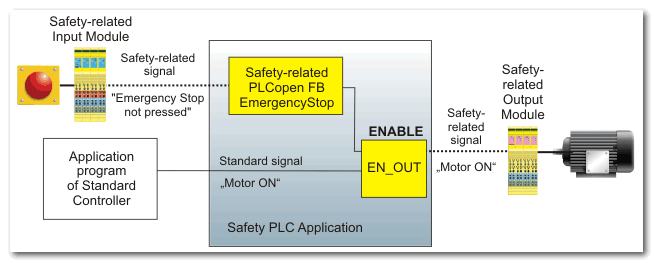Programming the Enable Principle
The standard (non-safety-related) controller program has read and write access to standard I/Os. Safety-related I/Os (SDIOs) can also be read by the standard controller program and indirectly written via the Safety PLC. "Indirectly" means that safety-related outputs will only be connected if enabled by the Safety PLC. This logical mechanism is referred to as enable principle.
The Safety PLC has access to the safety-related I/Os and is exclusively able to set safety-related outputs. This can be done either directly or by using a standard signal of the controller program.
|
WARNING
|
| Unintended machine operation Verify the impact of standard signals which influence safety-related outputs by an AND connection or via the EN_OUT function. |
Enabling can be programmed using the EN_OUT function as shown in the following example (if, for example, the final signal has to be processed in the user program).
| The enable principle can also be realized by mixing safety-related and standard variables in one SNOLD network. The easiest realization is the AND connection of a safety-related LD contact with a standard LD contact. | |
Example:
 |
|
|
|
